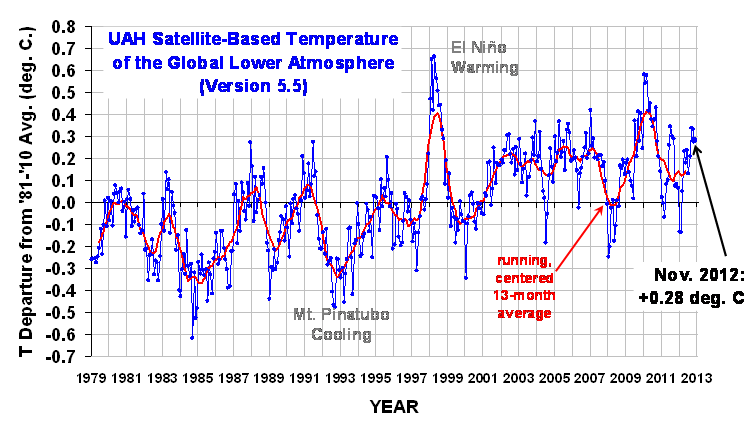After my extended trip to the West Coast, I am finally posting the global temperature update (sorry for the delay).
Our Version 5.5 global average lower tropospheric temperature (LT) anomaly for November, 2012 is +0.28 deg. C (click for large version):

The hemispheric and tropical LT anomalies from the 30-year (1981-2010) average for 2012 are:
YR MON GLOBAL NH SH TROPICS
2012 1 -0.134 -0.065 -0.203 -0.256
2012 2 -0.135 +0.018 -0.289 -0.320
2012 3 +0.051 +0.119 -0.017 -0.238
2012 4 +0.232 +0.351 +0.114 -0.242
2012 5 +0.179 +0.337 +0.021 -0.098
2012 6 +0.235 +0.370 +0.101 -0.019
2012 7 +0.130 +0.256 +0.003 +0.142
2012 8 +0.208 +0.214 +0.202 +0.062
2012 9 +0.339 +0.350 +0.327 +0.153
2012 10 +0.333 +0.306 +0.361 +0.109
2012 11 +0.281 +0.301 +0.262 +0.172

 Home/Blog
Home/Blog



